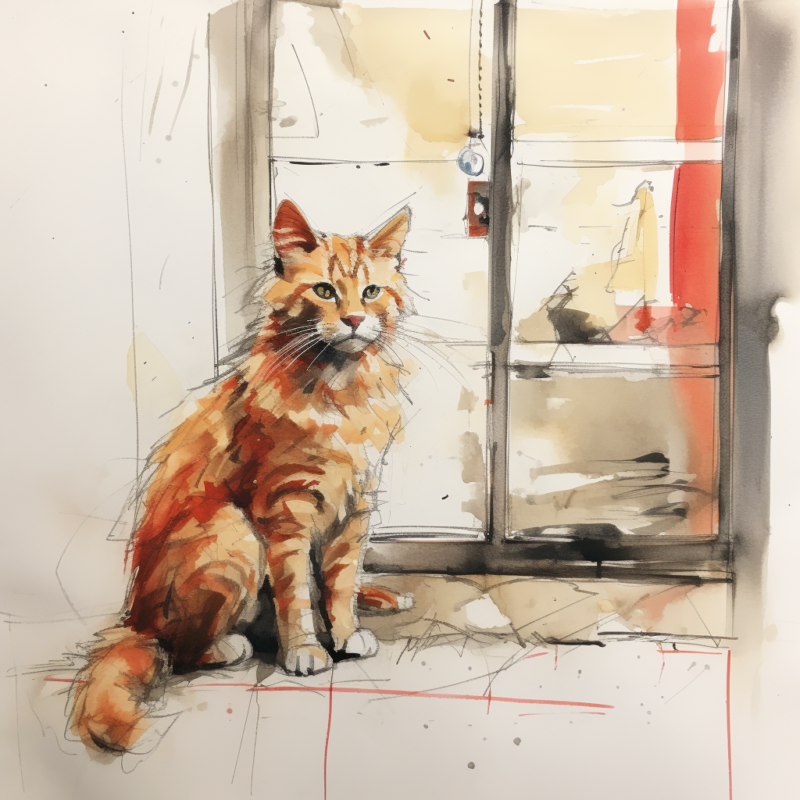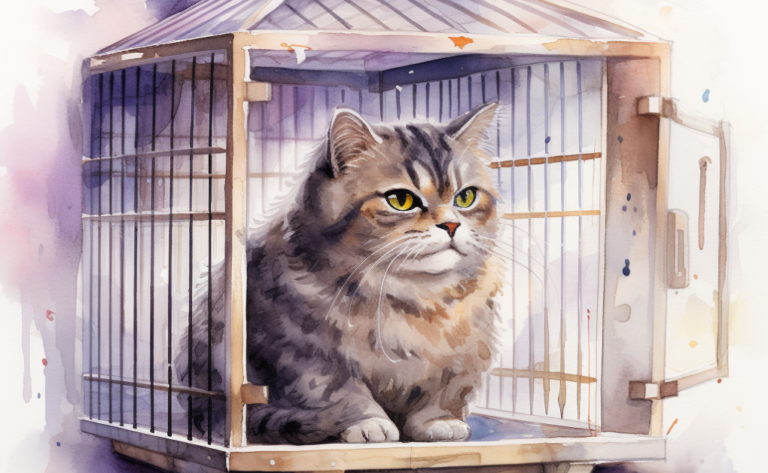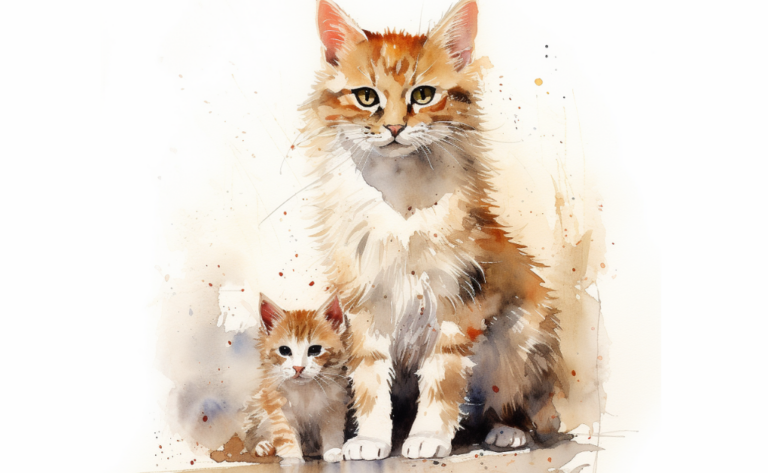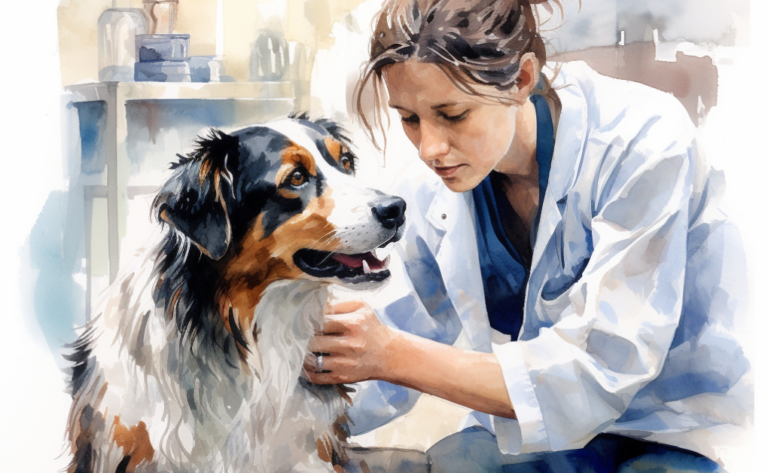What is Hyperthyroidism in Cats?
What is it?
How is it Treated?
Breed Predispositions
Siamese Himalayan Persian Domestic Shorthair Domestic Longhair
Introduction
When Oliver, a charming Ragdoll cat, started showing signs of weight loss and increased appetite, his owner, Grace, knew something was off. Worried about these unexpected changes, she took Oliver to their trusted veterinarian for a thorough check-up. After conducting blood tests, the veterinarian diagnosed Oliver with hyperthyroidism, a common hormonal disorder in cats.
Hyperthyroidism in cats, a common disease, is characterized by the thyroid glands excessively producing thyroid hormones. This condition is one of the most frequently encountered endocrine disorders, particularly in older cats, and it significantly impacts a cat’s metabolism and various organ systems.
Cats have two thyroid glands, and when these glands overproduce thyroid hormones, it can result in elevated energy levels, weight loss, increased appetite, and other systemic effects. High thyroid hormone levels can also influence heart disease, potentially leading to complications. Moreover, the thyroid level is crucial in maintaining optimal kidney function, which hyperthyroidism can disrupt.
Prompt identification and management of thyroid disease are crucial to preventing complications and enhancing the quality of life in many hyperthyroid cats. Regular monitoring and veterinary care are indispensable for cats living with this condition.
Where are Your Cat’s Thyroid Glands?
A cat’s thyroid glands are located in the neck region, on either side of the trachea (windpipe), near the base of the throat. These small, butterfly-shaped glands produce thyroid hormones regulating the cat’s metabolism and bodily functions. In cats with hyperthyroidism, these glands become enlarged and overactive, leading to the excessive production of thyroid hormones.
What Do Your Cat’s Thyroid Glands Do?
A cat’s thyroid glands play a vital role in regulating the cat’s metabolism and various bodily functions. These small, butterfly-shaped glands in the neck region near the base of the throat produce thyroid hormones. Thyroid hormones, such as thyroxine (T4) and triiodothyronine (T3), are released into the bloodstream and act on cells throughout the body. They help regulate the cat’s metabolism, affecting energy production, body temperature, heart rate, and growth and development. The thyroid glands and their hormones are essential for maintaining proper physiological balance in a cat’s body.
Causes of Feline Hyperthyroidism
The most common causes of hyperthyroidism in cats include:
Thyroid Gland Enlargement and Tumor Development
Hyperthyroidism is generally associated with irregular thyroid gland enlargement, often due to benign adenomas or, less commonly, malignant growths known as carcinomas. The development of such growths in the thyroid tissue leads to excessive thyroid hormone production, thereby accelerating the cat’s metabolic processes.

Dietary and Environmental Factors
Emerging studies suggest that certain dietary and environmental factors may contribute to hyperthyroidism. For instance, cats that eat a significant amount of canned food, especially those rich in liver or fish, exhibit a higher risk of acquiring this condition. Furthermore, environmental pollutants, like flame retardant chemicals termed polybrominated diphenyl ethers (PBDEs), have been detected in higher amounts in cats with hyperthyroidism.
Age and Breed Predispositions
Hyperthyroidism is predominantly seen in middle-aged and older cats, typically those aged ten and above. Some cat breeds may also exhibit a genetic predisposition to this ailment.
Hormonal Imbalances
Particular hormonal imbalances can prompt an overproduction of thyroid hormones, resulting in hyperthyroidism. Some cats may have an innate predisposition to such imbalances, which makes them more susceptible to this condition.
It’s important to note that treating hyperthyroidism in cats is a delicate balancing act, as the affected cat may require special care to maintain optimal thyroid function, particularly in those with an enlarged thyroid gland.
What Are the Symptoms of Hyperthyroidism in Cats?
Cats affected by hyperthyroidism may exhibit a variety of clinical signs, such as:
- Significant weight loss even though the cat’s appetite has increased, a common sign of hyperthyroidism.
- A surge in thirst and urination, indicating a change in the cat’s metabolism.
- A heightened state of restlessness and hyperactivity is typically observed in hyperthyroid cats.
- An unkempt appearance and matted fur, resulting from the cat’s inability to groom properly due to increased restlessness or discomfort.
- A noticeable increase in the heart rate, potentially accompanied by a heart murmur.
- Episodes of vomiting or diarrhea indicate that the digestive system is being affected.
- An increase in the volume of feces, often resulting from the accelerated digestion process due to the presence of ectopic thyroid tissue.
Diagnosis for Cats with Hyperthyroidism

Blood Tests
Elevating thyroid hormone levels, specifically thyroxine (T4), in the bloodstream usually point toward cat hyperthyroidism. This diagnosis can be validated through a specific blood analysis.
Advanced Blood Tests
In some scenarios, if the T4 levels of a cat suspected to have hyperthyroidism fall within the higher end of the normal range, comprehensive blood evaluations such as free T4 by equilibrium dialysis (fT4 by ED) or a T3 suppression test might be required to confirm the diagnosis of hyperthyroidism.
Imaging Studies
Diagnostic imaging techniques like ultrasound, nuclear scintigraphy, or computed tomography (CT) provide valuable information about the thyroid gland’s size, shape, and location. These procedures are crucial in identifying abnormal thyroid tissue or thyroid tumors that could lead to hyperthyroidism.
Physical Examination
A thorough physical assessment by the vet can help spot symptoms associated with hyperthyroidism, such as weight loss, an accelerated heart rate, or an enlarged thyroid gland. However, such findings should be substantiated with corresponding blood tests, as they’re inconclusive.
Histopathology
It’s worth noting that while hyperthyroidism is more common in older cats, cats younger than ten can also develop hyperthyroidism. Furthermore, other health conditions can be diagnosed along with hyperthyroidism, further complicating the cat’s health status.
Treatments Options For Hyperthyroidism
Medication
Medication for hyperthyroidism uses drugs like methimazole, which inhibits the thyroid gland’s ability to produce excess thyroid hormones. This medication doesn’t cure the condition but manages the symptoms by reducing hormone production. The dose is adjusted based on periodic blood tests to ensure effectiveness and prevent potential side effects. Long-term use is generally safe but requires regular monitoring by a vet to ensure the cat’s overall health.
Dietary Therapy
Dietary therapy treats hyperthyroidism in cats by limiting the intake of dietary iodine, which is essential for thyroid hormone production. Special prescription diets are formulated with minimal iodine content. Lower iodine levels mean the thyroid has less raw material to overproduce thyroid hormones, thereby controlling symptoms. The cat must only eat the prescribed diet, as other foods may contain more iodine, defeating the diet’s purpose.
Radioactive Iodine Therapy
This effective treatment option involves injecting radioactive iodine to destroy the abnormal thyroid tissue. This procedure is generally safe and has few side effects.
Surgery
In some cases, a surgical treatment like thyroidectomy or removal of the affected thyroid gland might be an option. However, this procedure comes with certain risks and is less commonly undertaken due to the availability of safer, different treatment options.
- Radioactive iodine treatment, particularly I-131 therapy, has successfully managed hyperthyroidism in many cats. About 95% of all hyperthyroid cases see an improvement within three months of undergoing this therapy. The radioactive iodine adheres to the thyroglobulin protein within the thyroid cells.
The treatment of feline hyperthyroidism varies, but the goal is always to return thyroid hormone levels to normal and preserve parathyroid gland functionality. Remember, an experienced practitioner in veterinary internal medicine should oversee these treatment approaches.
Regular Monitoring After Treatment
Once your cat has been diagnosed with hyperthyroidism and has begun treatment, your feline companion must undergo regular check-ups to assess the effectiveness of the intervention and adjust it as necessary. Here’s why:
Monitoring Therapeutic Response
Regular monitoring becomes essential to gauge how effectively your cat responds to the instituted treatment. Whether the treatment plan involves medication, dietary alterations, surgical intervention, or radioactive iodine therapy, regular follow-ups help ensure that the thyroid hormone levels are appropriately controlled and that many hyperthyroid cats aren’t experiencing any adverse side effects.
Adjusting Treatment Plans
Hyperthyroidism’s incidence varies, and not all cats will respond similarly to the treatment. What works well for one may be less effective for another. Regular surveillance allows for adjustments to the treatment plan based on each cat’s response, which results in better control of hyperthyroidism and improved quality of life for your pet.
Detecting Potential Complications
Hyperthyroidism can exert significant effects on a cat’s health, including impacts on the heart and kidneys. Regular check-ups allow these potential complications to be detected early and managed appropriately. For example, routine blood pressure measurements can detect hypertension, a common complication of hyperthyroidism, while regular blood and urine tests can detect early signs of kidney disease.
Ensuring Good Quality of Life
Lastly, consistent monitoring ensures that cats who receive hyperthyroidism treatment live longer and enjoy a good quality of life. This includes ensuring that your cat has regained and is maintaining a healthy weight, demonstrating a good appetite, and exhibiting signs of active and comfortable living.
Your vet might typically recommend blood tests to measure the level of thyroid hormones every three to six months and periodic reassessment of your cat’s overall health status. However, the frequency and type of monitoring largely depend on the severity of the hyperthyroidism, the type of treatment administered, and your cat’s overall health, keeping in mind the risk of hyperthyroidism recurrence in some cases.
Frequently Asked Questions
Disclaimer: The information provided on this veterinary website is intended for general educational purposes only and should not be considered as a substitute for professional veterinary advice, diagnosis, or treatment. Always consult a licensed veterinarian for any concerns or questions regarding the health and well-being of your pet. This website does not claim to cover every possible situation or provide exhaustive knowledge on the subjects presented. The owners and contributors of this website are not responsible for any harm or loss that may result from the use or misuse of the information provided herein.







